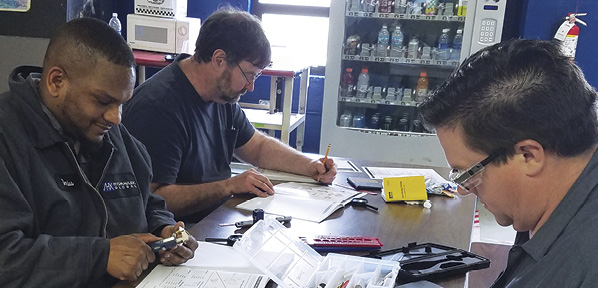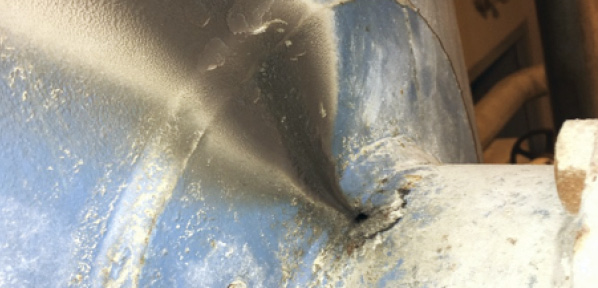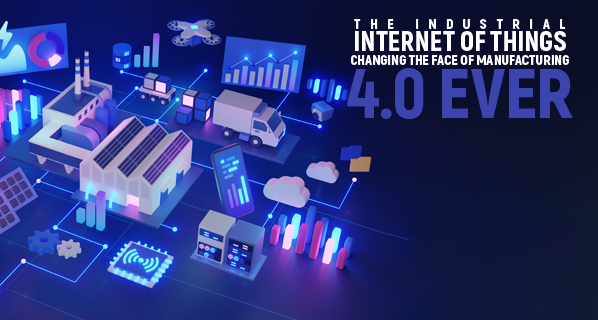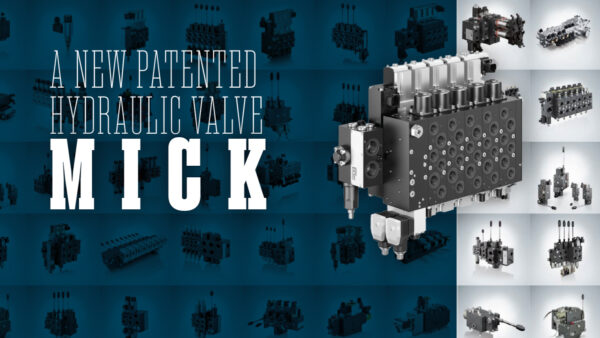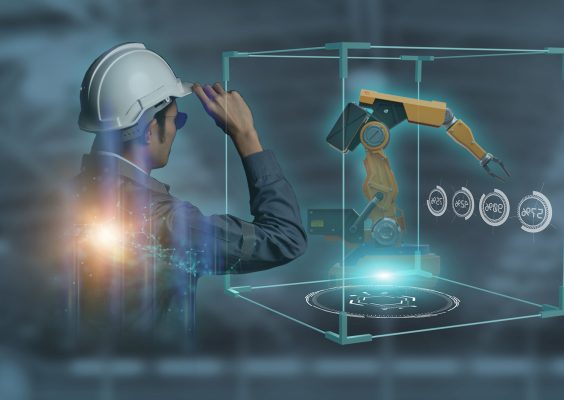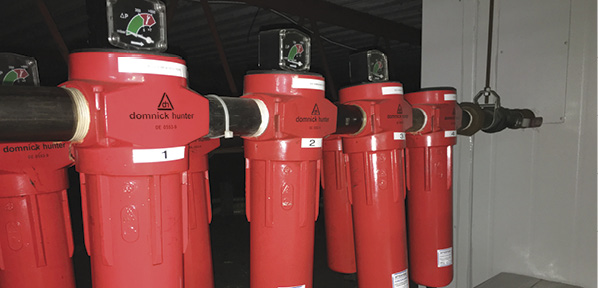Pneumatic Cylinder Cushioning: Increasing the Efficiency of Your Entire Pneumatic System
By Mike Guelker, Product Manager – Pneumatic Actuators FESTO Corporation
With the right end-position cushioning, you can significantly increase the efficiency of your entire pneumatic system, improving cycle time and even reducing the size of the components used. All this for the simple reason that good end-position cushioning decreases the impact forces generated by changing loads and extreme dynamic stress – factors that play a crucial role in defining the travel time and speed of pneumatic cylinders.
Latest Technology
In order to ensure that the cushioning performance is as effective as possible, it is important to select the most suitable type of cushioning for the application in question. We want to look at the best performing and most cost-effective end-position cushioning technologies for pneumatic cylinders.
This technology refers to the elastic cushioning rings (made of elastomer) that are integrated either as part of the cylinder piston or in the end position in order to reduce the impact forces and the noise of the impact made when the piston reaches the cylinder end position. Since only a small amount of kinetic energy can be absorbed, Bumpers are particularly suited to slow operating speeds, low loads and applications with short working strokes. The performance of Bumpers also varies, depending on the manufacturer or the type of drive, because the hardness and quality of elastomer materials differ.
Elastic Bumpers are a simple yet effective standard solution for end-position cushioning in pneumatic cylinders.
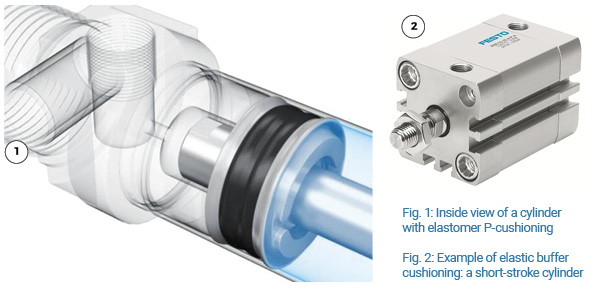
When the dynamic forces and loads are larger, additional cushioning is required in order to prevent the drive and system from being overloaded. Machine and plant builders, therefore, often use the adjustable pneumatic cushioning system PPV.
In this technology, with each working stroke, a mechanism traps a specific volume of air in the end position. This air is compressed to generate a braking effect. The exhaust air flow can be controlled using an adjusting screw, allowing manual adjustment of the braking effect. When manually adjusting PPV end-position cushioning systems, it’s necessary to take the following factors, which affect the cushioning characteristics, into account: the moving mass, the piston speed, the acceleration of the piston, the working pressure and the friction in the cylinder. It may be necessary to readjust the cushioning after a certain number of cycles in order to maintain optimum cushioning performance in the long term.
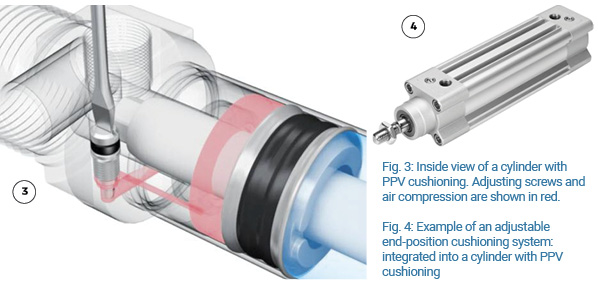
Self-adjusting cushioning PPS for pneumatic cylinders also compresses air to generate a braking effect. Unlike PPV cushioning, though, the exhaust air flow control of compressed air is altered, depending on the stroke.
The patented operational principle is as follows: the exhaust air escapes through the slots in the cushioning boss. The cross-section of this exhaust method is altered by the cushioning stroke. This allows the end-position cushioning PPS to adjust automatically to the different energy levels generated by changing loads and speeds. PPS cushioning even reacts to changes in parameters such as friction and working pressure, and ensures optimum cushioning without the need for manual adjustments. PPS automatically minimizes the effect that acceleration forces and shock have on machine components and workpieces. As there is no need for manual adjustment, PPS saves the system operator valuable time – and thus costs – during installation and maintenance of the drives. A positive side-effect of this is the increased process reliability and protection against faulty settings.
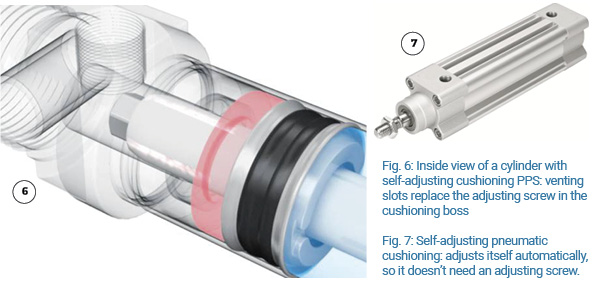
Compared to PPV cushioning that has been adjusted poorly or not at all, self-adjusting cushioning PPS always provides better quality cushioning. However, its performance reaches its limits when the energy absorption (extreme combinations of speeds and loads) is very high. In such cases, the cushioning performance is not as good as that of well-adjusted end-position cushioning PPV. However, the biggest advantage that PPS has over other types of end-position cushioning technology is that it provides optimum cushioning results for most speed/load combinations (approx. 80% of all industrial applications). This makes it a very good solution for a wide range of applications in all industrial sectors. Since PPS is easy to clean and has no dirt traps (Clean Design), it is becoming increasing popular in the food industry.
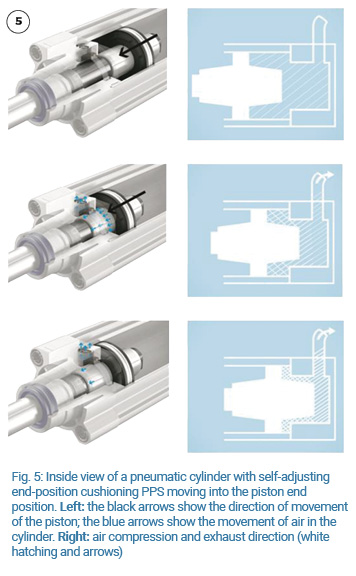
PP1 is always recommended in situations that demand extremely fast travel. This design combines the features of the adjustable pneumatic cushioning PPV with the self-adjusting pneumatic cushioning PPS, and has an additional adjustable bypass for PPS to improve the cushioning performance. When the bypass is closed, this combination of technologies thus acts as a simple pneumatic cushioning system PPS. One of the great advantages of this hybrid design over PPV cushioning is that it is much easier to adjust manually. In addition, PP1 does not usually require readjustment. This end-position cushioning system is a relatively new development with great potential. PP1 is currently only available as a special design.
End-position cushioning PPP is a pressure-sensitive pneumatic cushioning system that is used in very special applications. When conditions are extremely demanding and the end-position cushioning systems discussed above are not powerful enough, PPP can be used to achieve very good cushioning. When the load/speed combination changes, or there are pressure fluctuations in the working air, PPP ensures optimum end-position cushioning. Like the other pneumatic end-position cushioning systems, PPP generates its braking effect by compressing a trapped volume of air. It automatically adapts to changes in load and offers a greater power spectrum than the PPV.
The patented operational principle is as follows: the flow rate required to dissipate the energy is regulated automatically by a specially shaped spring-ball system. The cross-section of the cushioning is adjusted depending on the buffer pressure.
As it is a special design, PPP is adapted by the manufacturer to suit the individual customer’s application. This makes it a costly end-position cushioning system. Machine and plant builders also need to plan accordingly for the development time when designing their projects.
Servo-pneumatic cushioning systems can regulate the cushioning process directly. Using a displacement encoder, a proportional valve and an electronic end-position controller, the approach to the end positions of the pneumatic cylinder is controlled electronically. A counter-current of air is channeled in at specific, predefined positions to brake the piston. The end-position controller regulates the air flow rate through the proportional valve. This method produces excellent cushioning characteristics. The end-position controller automatically compensates for fluctuations in the supply air and dynamic loads. Servo-pneumatic end-position cushioning is very effective, but the number of additional components required makes it expensive. It is mainly suitable for applications with very high cycle rates, strokes of more than 300 mm and loads greater than 10 kg.
Choosing the Right End-position Cushioning Technology
There are a great many factors that play a role in this choice. Moving loads, travel speeds, the combination of the two, cylinder size and length, and horizontal and vertical alignment are all important. On top of this, the decision is made even more difficult by reciprocal dependencies. The selected end-position cushioning technology should come as close as possible to fulfilling the requirements of the application. Ultimately, the application defines the solution. There is no “one-size-fits-all” solution.
However, it is still possible to provide a general recommendation for an end-position cushioning solution for many industrial applications. The scope of the self-adjusting end-position cushioning PPS reliably meets the needs of most industrial applications. What’s more, compared to alternative end-position cushioning methods, it provides financial, planning and industry-specific benefits, such as Clean Design for the food industry.
Each type of cushioning technology has advantages and disadvantages that need to be weighed. There is a suitable solution for both standard applications and special requirements. The latter may require a specialist end-position cushioning system, which would necessitate a certain amount of development work. However, searching for the right solution may be easier than it seems – thanks to the self-adjusting cushioning PPS, which combines a
number of advantages.
For information on PPS Check, a quick and easy way to provide clarity, which can be used on your smartphone, visit www.festo.com/app in your smartphone’s browser, then click PPS Check.
For information on end-position cushioning in general, contact Festo at 866-463-3786 or Product.Support.us@festo.com.

